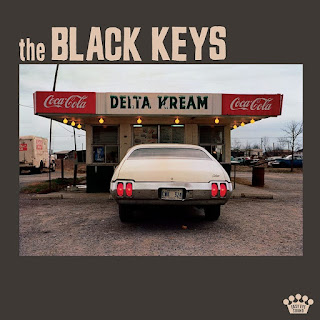David Bowie’s Pinups
While Bowie was working on a vaguely-defined concept album based on George
Orwell’s post-war dystopian novel Nineteen Eighty-Four (elements of
which he’d weave into 1974’s Diamond Dogs), Bowie enlisted guitarist Mick
Ronson and bassist Trevor Bolder from his former backing band the Spiders From
Mars, along with Bluesbreakers drummer Aynsley Dunbar, to record a
label-pacifying “stopgap” collection of cover tunes. With a track list
comprised of mid-to-late ‘60s British records that Bowie loved as a younger
man, Pinups was designed with an eye towards wooing teenaged American
fans unfamiliar with the original versions of the songs.
Critics
unfairly assailed Pinups, many writing that Bowie’s renditions of songs
by the Pretty Things, Them, the Yardbirds, the Who, and others weren’t as good
as the originals. Blah, blah, blah…these reviews missed the point, really, as
Bowie performed these personal faves not with mindless mimicry of the
originals but rather in his own unique fashion, reinterpreting them as he saw
fit. He retained enough of the original flavor and melodic hooks to reel in
listeners, but delivered them with passion and energy that created an
irresistible playlist that appealed to fans like catnip. For many of us Bowie
fans at the time, this was the first we heard some of these songs, prompting
many to go out and look up the originals. It’s safe to say that the Pretty
Things won over more than a few new fans stateside after hearing Bowie singing
“Don’t Bring Me Down” or “Rosalyn.”
Like usual, Bowie was ahead of
the trends, recording an album of cover songs as a lark at the peak of his
1970s-era commercial success. Truthfully, though, Pinups is a good
album by any standard of rock ‘n’ roll. The aforementioned PT’s song “Rosalyn”
takes the band’s basic blues-infused garage-rock blueprint, spins the tempo up
to punk-rock levels of energy, and lets Ronson cut loose with his dynamic,
razor-sharp riffing. The song quickly jumps into a tearful reading of Them’s
“Here Comes the Night” which captures all the blue-eyed soul and heartbreak of
Van Morrison’s original, while the Yardbirds’ cover of Billy Boy Arnold 1955
song “I Wish You Would” is all but shorn of its Chicago blues roots in favor
of a piercing Ronson guitar riff and an uncompromising and fiercely reckless
arrangement.
Sorrow
The Mojos – which counted Aynsley Dunbar among their early members – are one of
the more obscure choices here, and the band’s “Everything’s Alright” builds upon
the song’s British Invasion roots with a glammed-up arrangement heavy on Bowie’s
vocal gymnastics and Dunbar’s tribal rhythms. The Who’s “I Can’t Explain” veers
delightfully onto Roxy Music turf with a slowed-down, almost languid performance
punctured by cacophonic blasts of saxophone. Bowie raids the Peter Townshend
songbook again for “Anyway, Anyhow, Anywhere,” the singer playing it straight
down the line with a close-to-the-sleeve vocal performance wrapped around
Dunbar’s Keith Moon-styled drum pyrotechnics.
The
mournful “Sorrow,” which had been a U.K. chart hit for both the McCoys in 1965
and the Merseys in ’66, was the break-out song from Pinups, and while it
rose to #3 on the U.K. charts (#1 in Australia!), it found only a few diehard
fans in the U.S. Bowie’s rendition is superior to either of the previous
versions, offering the perfect balance of lovelorn melancholy and creative risks
(in Bowie’s gorgeous multi-tracked vocals). By contrast, the Easybeats’ “Friday
On My Mind” displays Bowie’s chameleonlike ability to take on different musical
styles with ease, the singer delivering a spry and energetic pop-styled vocal
riding atop Ronson’s scorching guitar licks. The Yardbirds’ “Shapes of Things”
was another fetching tune that prompted young fans to seek out the original,
Bowie balancing art and tradition with a reckless and joyful vocal performance.
In spite of the critical barbs levied on it at the time, Pinups has
weathered the decades since its release. Placed in the context of Bowie’s
lengthy career – which spanned six decades and better than two dozen studio
albums – Pinups is seen as a bona fide artistic triumph. With Pinups, Bowie
stamped “paid” on his glam-rock persona, allowing the artist to extend himself
musically wherever he chose to go. What the critics don’t know, the fanboys
understand, and Pinups carried on Bowie’s commercial winning streak, topping
the U.K. albums chart, hitting Top 30 in the U.S. and setting the stage for
the enormous success of the following year’s Diamond Dogs. (RCA
Records, 1973)
Buy the CD from Amazon:
David Bowie’s Pinups













